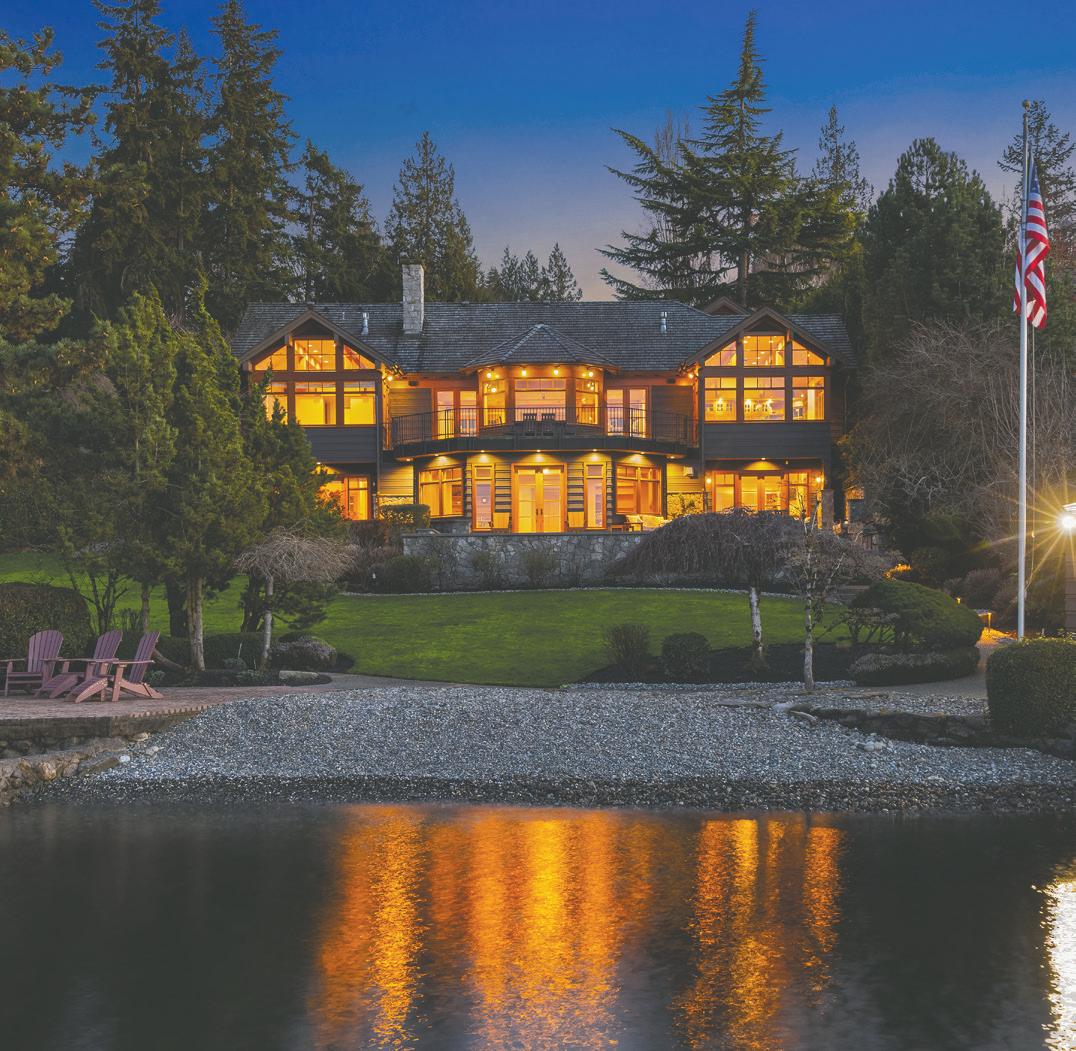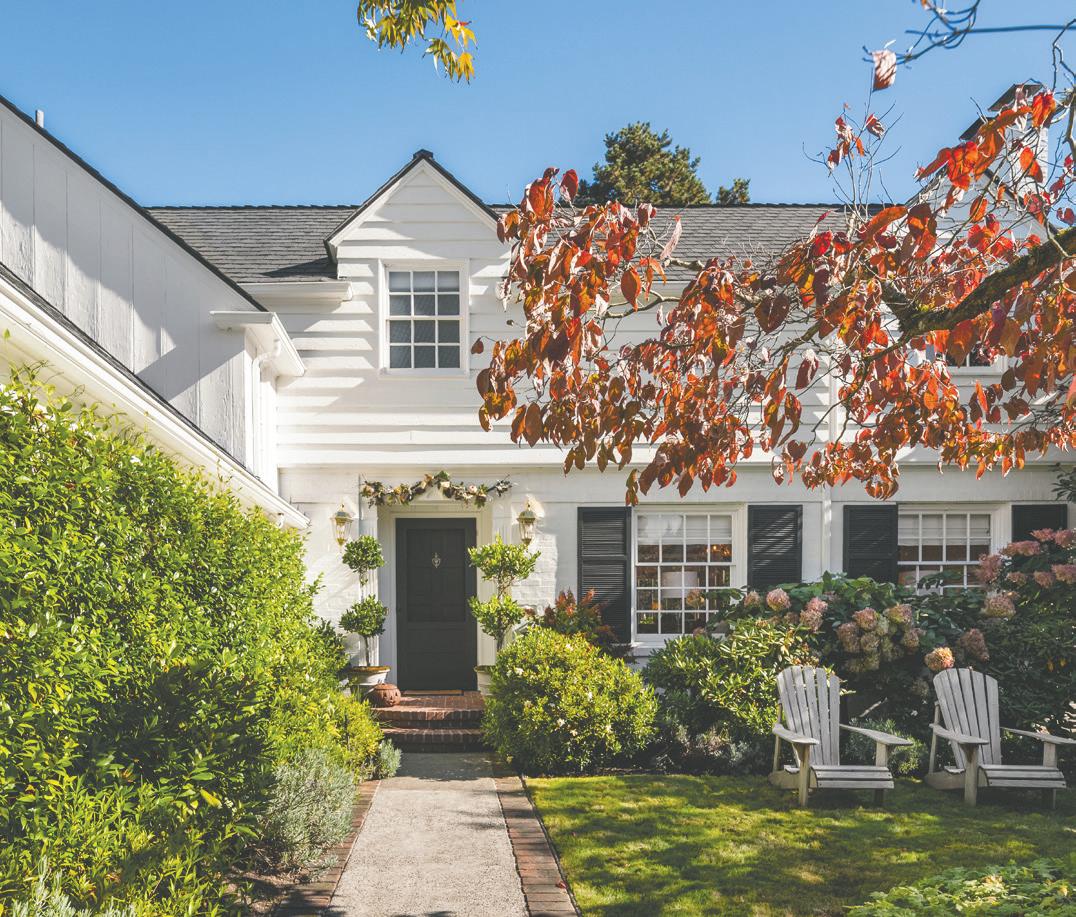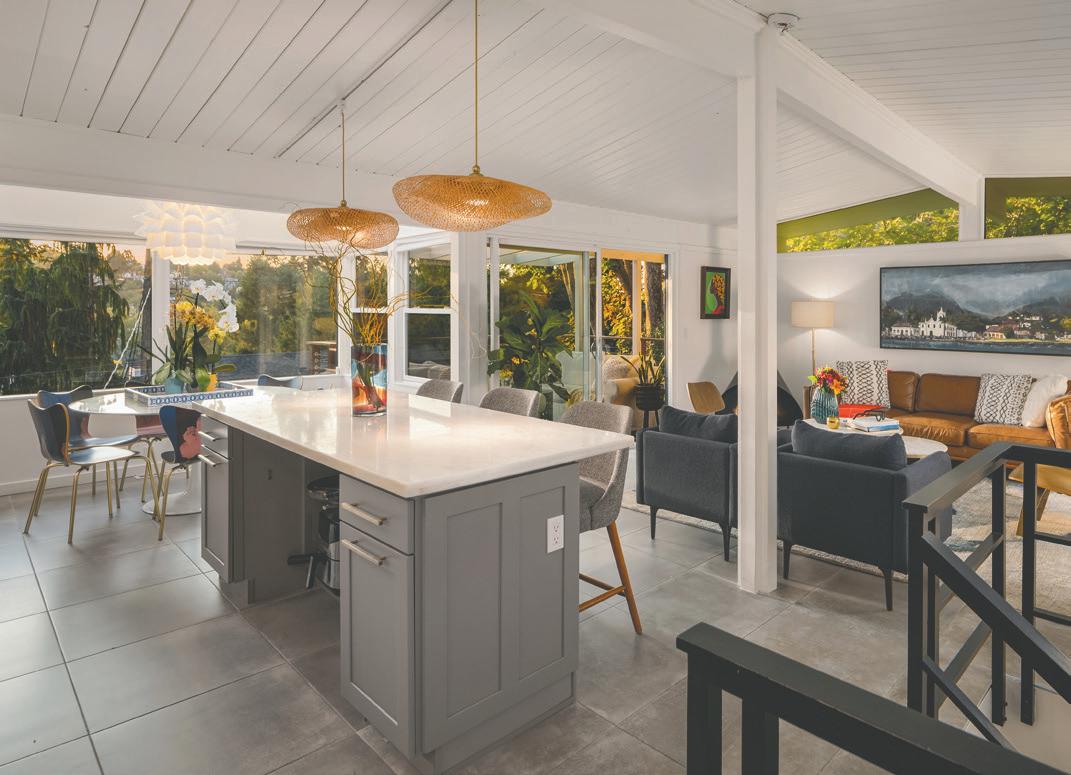Cooking With Purpose: Lakeside Student Turns Passion Into Community Cookbook
In a Lake City kitchen, the sound of onions sizzling in a pan signals more than the start of a meal. For Lakeside School student Cate Lilleness, it’s the sound of community.
Lilleness first connected with the Hunger Intervention Program (HIP)—a nonprofit tackling food insecurity in north King County— through school. What began as a volunteer opportunity quickly became a calling. “I earned my food worker’s card and thought I’d just be helping in the kitchen,” she recalls. “Instead, I found one of the most rewarding experiences of my life: helping people by cooking.”
HIP’s mission is straightforward: increase food security for underserved populations through nutritious meals, educational programs, and advocacy. But its impact is anything but simple. Each week, HIP delivers thousands of meals across the region, tailoring programs to meet the needs of children, seniors, and families.
Summer Meals fill the gap for kids who rely on school lunches during the year.
Healthy HIP Packs send students home each weekend with backpacks of nutritious, shelf-stable food.
Senior Meals provide hot lunches and fellowship, while the East African Elders Program serves culturally authentic dishes at Northgate Community Center.
Shelter Meals offer daily nourishment to residents in transitional housing.
Afterschool Meals pair snacks and dinners with tutoring at the Lake City Library.
“Every chopped onion, every portioned hummus, every carefully packed lunch—it’s all more than just food,” Lilleness says. “It’s care, dignity, and hope on a plate.”
From Kitchen to Cookbook
Inspired by HIP’s work, Lilleness decided to combine her love of food with her growing sense of civic responsibility. The result: A newly published community cookbook, dedicated to HIP and available for purchase on Amazon. (Simply search Cate Lilleness to find it.)
The cookbook is more than a collection of recipes. It’s a celebration of how food connects people. Sales support HIP’s programs directly, ensuring more families

and individuals have access to healthy, culturally relevant meals.
“I wanted the book to highlight what HIP has taught me: that food is about more than feeding ourselves,” she explains. “It’s about building community, honoring culture, and showing compassion.”
More Than Meals HIP’s approach goes beyond filling plates. The nonprofit hosts cooking and nutrition classes, food justice workshops, and advocacy programs aimed at addressing the root causes of hunger. For volunteers like Lilleness, it’s an
education in how systemic inequities shape who has access to food—and what it means to fight back with compassion.
“HIP has shown me that the most important ingredient in any recipe is heart,” she says. “Cooking with purpose really can change lives.”
A Student’s Thanks aAs Lilleness reflects on her time with HIP, gratitude flavors every story. Gratitude for the chefs and staff who welcomed her. Gratitude for the seniors and children whose smiles brightened long kitchen shifts. Gratitude for the chance to transform a personal passion into community action.
“To everyone at HIP—thank you for showing me the power of cooking with heart,” she says.
For those who want to support HIP, there are many ways to get involved: volunteering, donating, spreading the word. Or, you can simply start by picking up a copy of Recipes for Change—Lilleness’s cookbook that blends food, creativity, and activism—by searching Cate Lilleness on Amazon.
Because as HIP reminds us, nourishing one another nourishes us all.

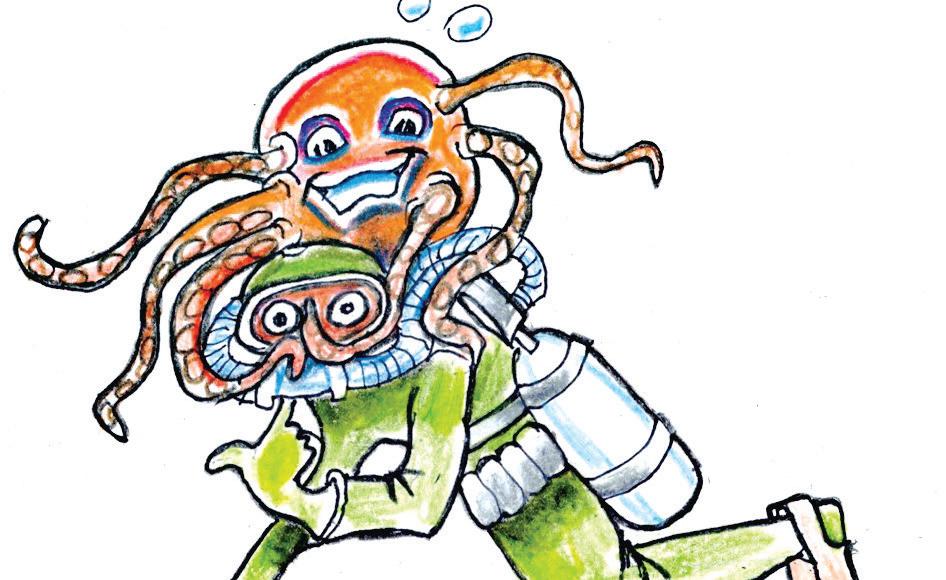
Meet Your Neighbor: Michelle Schoonover
By Jenny Martin

This is the second feature in a new "Meet Your Neighbor" series designed to help you get to know your neighbors. Although Madison Park is a small community, it can sometimes feel large. To foster a stronger sense of community, this column will introduce you to your neighbors. After reading each edition, you'll be able to put a name to a face and greet people like Michelle when you see her walking by.
Michelle Schoonover is President of The Junior League of Seattle, an organization located here in Madison Park whose mission is
to advance women's leadership for meaningful community impact. In this article, you’ll get to know Michelle Schoonover, the person behind the role.
JM. I understand that you were the first person in your family to graduate from college. Is that correct?
MS. Yes, I am the first person in my family to graduate from college in the United States. My mom's family is from Colombia, and they all have very impressive backgrounds, graduated from college there, and have had very successful careers. My grandfather was a Supreme Court justice there. He had to work very hard to get there—putting himself through college —and that's a whole other story for another day, which is very interesting. I want to eventually write a book about that one day. But it was challenging for me to be the first generation here. My mom came to the States to go to school, ended up meeting my dad here, got married, and started a life, but she never completed college. And so, when the time came for me to go to school, it wasn't easy to kind of figure out how to navigate things.
My mom was always there and super supportive of me as I tried to pursue whatever I wanted to do. But also, when you haven't done something yourself, it's kind of hard to provide that concrete guidance. And so, I am the first person in my family to have graduated from college, and that was possible through the sacrifice of many people, including my mom.
JM. Please share a particularly challenging period in your life and how you overcame it.
MS. My kids, my family —they're the why behind every single thing I do. And even before I became a mom, I knew it was really important to get an education. I know how critical education is, and knowing that if I were going to hold my children to that standard one day, I needed to complete this to ensure I could be a good example. I really believe in modeling the behavior you want to see in your kids, whether it's in the workplace or in a volunteer capacity; it's critical to walk the talk, essentially. And so that's why I did it
in the timeframe I did, because I knew I wanted to start a family and that it would be impossible to get it done without that bandwidth and capacity.
JM. Where do you draw support in tough times?
MS. I am the first woman ever in my family to work outside of the home with small children and o that is another challenge that has been difficult to navigate. I was really fortunate as a small child to have NEIGHBOR, 4

NOT IF. WHEN.
Talking with The Seattle Earthquake Project’s Nate Lessler about earthquakes and resilience
Not If. When. That’s the tag line for The Seattle Earthquake Project, an upcoming documentary from Montlake resident Nate Lessler about “earthquakes, anxiety, and the delicate relationship between humans and land in a city built on unstable ground.”

Dana Armstrong Emergency Prep
Nate connected with our local volunteerrun disaster prep group, the Madison Park Emergency Hub, during his project. As a fellow earthquake enthusiast (of sorts), I wanted to find out how his documentary is progressing and learn about his side project for the “Fix the Bricks” campaign, which aims to find funding solutions to retrofit old brick buildings in our state.
Nate’s documentary—supported by funding from King County’s 4Culture—aims to wrap up next year, and he was happy to have “any discussion around resilience or getting more people thinking about earthquake resilience.”
FROM ANXIETY TO ACTION: HOW FEAR SPARKED A FILM
Nate had an unusual motivation for his documentary subject: anxiety. “I had a lot of anxiety around earthquakes and specifically the ‘big one.’ There was something about earthquakes that seemed to kind of act almost as a metaphor or parallel for anxiety,” he shared. “They’re something that's going to happen, but you don't know when, and there's nothing you can do to stop it. There’s an anxiety angle and cultural anxiety around it. This thinking sometimes leads to sort of fatalism, or people to say, ‘There’s not much I can do about this.’

People think, ‘If the big one happens, it happens, but everything west of I-5 is going to be toast.’ Which is not true.“
That’s how the Seattle Earthquake Project began. He found researching the topic initially stressful, but as he dug in, Nate was drawn to other big questions: Why aren’t we doing more? What are the barriers to preparedness? Why do we have trouble wrapping our heads around these sorts of “low probability, high consequence bets”?
Per Nate, the notion of the big one has been built up to be a “scary, almost apocalyptic thing,”

but, he says, there seems to be a much more likely chance of us seeing a damaging earthquake like Nisqually–a deep inner slab earthquake.
In fact, there's about an 85% chance that Washingtonians will experience what’s termed a “damaging earthquake” in the next 50 years, according to local and federal government sources Nate shared. Per the documentary’s website, “Entire neighborhoods also face a high risk of liquefaction.”
Regarding our reactions to earthquake threats as Seattleites, Nate said, “It’s not the same thing, but I do see parallels to climate change in terms of procrastination and—kind of—denial.” He sees this documentary about a tangible problem as a useful way to shine light on other societal challenges that cause us anxiety.
Nate aims to wrap up filming and editing the documentary (Seattle Earthquake Project is the working title) in 2026. The film will dig into Seattle history more than people might expect, incorporating a wealth of archival materials and exploring stories of our past earthquakes, how we’ve responded, what we’ve learned from them, and how they shape our understanding of our city. To follow the documentary’s progress, visit the Seattle Earthquake Project’s website (www. seattleearthquakeproject.com/) or follow @ seattleearthquakeproject on Instagram.
FIX THE BRICKS: WASHINGTON BUILDINGS AT RISK
In the midst of his work, Nate realized he had great sound bites and useful information






that he could share with the public. His documentary’s main focus isn’t advocacy, but, he wondered, could he make a difference to earthquake preparedness in a more actionable way in the meantime?
This question, combined with conversations with local experts in the course of his research, led to Nate creating a short call-to-action video to spotlight House Bill 1810, which addresses “the urgent need to retrofit Washington’s unreinforced masonry buildings.” Per Nate, unreinforced masonry buildings (URMs) are a concern statewide (we are well behind California in shoring up this problem).
The call-to-action video features historic footage (including of the Nisqually earthquake) along with expert interviews on the likelihood of earthquakes and what damage we’d be likely to see if threats to these URMs are not addressed. The actual technical fixes are pretty simple, the video says. However, Nate said, “It's funny to say that it's the easiest big thing we can do, because it's not been easy at all to make it happen.”
I asked Nate why we need a bill for this, when it seems like a public safety issue that could come out of existing budgets. Turns out retrofitting private buildings like community churches or small businesses is expensive, and owners need funding options such as tax credits or incentives—the bill will help study and suggest effective options.
For more on HB 1810 and to see Nate’s video (which features some of the footage we might see in the documentary), visit bit.ly/HB1810.
I asked Nate to tell me what people could do to support the bill, which appears to have little opposition. He suggested “talking to people” when earthquakes come up in conversations—or when someone makes an off-hand joke about the big one. Increased awareness drives action. Given the rapid growth in our area, Nate said, people live here now who weren't here during the Nisqually earthquake. And some people who live here don't even realize that we're capable of getting earthquakes in Seattle.
Also, consider calling your representative about the bill next February, when you hear news stories about the 25th anniversary of the Nisqually earthquake.
LESS FATALISM, MORE EDUCATION: NATE’S CALL TO ACTION
Nate’s passion for promoting earthquake awareness (and both human and structural resilience) is clear. He’s seen two ends of a
spectrum in our area: on one end are people who say, "That is never going to happen." Or, "We could get hit by an asteroid." For those people, we could educate them that the risk is real and there are things we can do.
At the other end of the spectrum, Nate’s seen people like himself, who have anxiety about earthquakes and would rather not think about them. Sometimes, he said, people think, “Oh well, I have a go bag, I have an emergency plan—but beyond that, there's nothing I can do.”
Nate’s response: “No, there is a lot more that we can do. You can educate neighbors about the risk. You can push for legislation that will make schools safer, buildings safer.” He added that “I don't think many people are calling [legislators] up and saying, ‘Why aren't you doing anything about earthquake risk?’” He feels we need to address preparedness on both a community and societal level, in addition to an individual one.
“
They’re something that’s going to happen, but you don’t know when, and there's nothing you can do to stop it.”
At the end of our interview, Nate summarized his feelings about earthquake preparedness like this: “My personal call to action would be that what I really would like to see is less resignation and fatalism around this topic. Less focus on the big one and maybe more focus on the next one.”
Hear, hear, Nate!
As always, this column is part of Madison Park Emergency Hub’s outreach effort. We’re an all-volunteer organization dedicated to helping neighbors help each other after a disaster. To be added to our mailing list, please contact us at madparkhub@gmail.com.
One of the Great Accidents and Mysteries of Nature
By Steve Lorton
Come late autumn, the showstoppers of nature shift from flowers, to autumn color, on to the sculptural forms of defoliated deciduous trees. Then our eyes turn to the depth and variety in conifer colors and, for those with an eye for detail, the beauty of bark.
Bark. Few of us think of it as an important component to the garden but it is and now’s the time to look at it as you meander the winter landscape. You’ll find no shortage of examples of handsome bark in the horticultural potpourri of our urban enclave.
On the upper, playground level of Madison Park, your eye may be caught by several small, handsomely contorted trees, with shiny cinnamon colored bark: Arbutus
‘Marina’. From a small genus of about 14 species, this Arbutus is first cousin, of somewhat unknown lineage, to our native Madrona (A. menziesii) and the commonly planted and much loved Strawberry Three (A. undeo).
Leaves of A. ‘Marina' are glossy, evergreen, about the size of a large lemon. In fall the tree sports clusters of rosy pink, tiny bell-shaped flowers. As we ease into winter, round red fruits with a jewel-like glow, about an inch or so in diameter, appear on the tree. These are edible, like those of Arbutus unedo, but mealy in texture and not very flavorful. Most garden books say A.’Marina’ will reach a height of 40 feet, albeit the plants one sees here, rarely reach 20. Keep in mind, they’ve only been seen in

our gardens for about twenty-five years at this point.
In 1984, Arbutus ‘Marina’ was introduced to the gardening world by the Saratoga Horticultural Foundation. Its origins are a mystery. It likely came from a natural hybrid between Arbutus undeo, found in the British Isles and Western Europe and Arbutus andrachne, which grows around the southeastern Mediterranean into northern Iraq. That natural hybrid was named Arbutus x andrachnoides.
Here, the plot thickens. A plant, suspected to be an example of this natural hybrid was thought to have been sent to San Francisco from Europe for display at the 1915 Pan-Pacific International Exposition. Unidentified at the time, that Arbutus was grown in the Strybing Arboretum following the Exposition. In 1933, the plant was propagated by cuttings. One of those rooted starts made it into the garden of a San Francisco homeowner. It grew, majestically, was discovered to be the unusual thing that it was and methodically reproduced. Once established, it was introduced to the horticulture community, taken up by the nursery trade (most importantly Monrovia) and… Voila! A star was born.
“ In 1984, Arbutus ‘Marina’ was introduced to the gardening world by the Saratoga Horticultural Foundation.”
So far it has proven to be a winner in our gardens, especially considering what appears to be our ongoing paucity of summer rainfall. It is not fussy about soil, however, perfect drainage is essential. Let it stand in even soggy soil and it will show signs of distress and be vulnerable to disease.
Now through February are the months to get this, like most other trees and shrubs, in the ground. Pick a spot with full sun exposure. If the soil you’re digging into is exceptionally gravely, you may want to amend it when you back fill with 30% humus. That

will get the plant off to a good start, then it will send its roots down into the ground around and be perfectly happy. If the first two or three summers are exceptionally dry and hot, you may want to give the adolescent tree a bit of water, but do not over do it. Water well, wait, watch, and see how it responds. When it comes to summer water for all plants in the Arbutus genus, err on the side of frugality.
As Arbutus ‘Marina’ grows, you may want to thin out side branches going from the inside up to accentuate its sculptural form and show off the glossy, rusty-red bark of the major trunks.
Choose companion plants to suit the soil and growing conditions of the Arbutus. Yucca, especially the variegated forms of Y. filamentosa, in a sweep or carpet, make an excellent underplanting, as does our native ground cover, Kinnikinnick. The big Sedums, like S. spectabile are always good en masse in dry locations and full sunlight. For any sunny spot with questionable soil and little or no summer irrigation, (like a parking strip) a clump or two of Arbutus ‘Marina’ with a creative underplanting is a smart, handsome, and forward thinking choice… a startling statement to contrast with the mossy, ferny green of our regional winters.
“Ride Ready” Workshops Help Seattleites Ditch the Car Keys - Not Their Independence
If your ORCA card has been collecting dust because the app looks confusing or you’re convinced the Route 8 never actually shows up - you’re not alone. Luckily, King County Metro and Sound Generations are teaming up this month to fix that with free “Ride Ready” workshops designed to help residents feel confident navigating Seattle’s web of transit routes.
The classes are part travel tutorial, part confidence booster. Instructors walk participants through reading bus timetables, using the Transit GO and OneBusAway apps, and even practice tagging on and off with an ORCA card. Each session ends with a guided group trip - yes, a literal field trip - to prove that public transit can be approachable, affordable, and occasionally even on time.
November Sessions:
• Rainier Community CenterThursday, Nov. 7, 10 a.m. – noon
• Greenwood Senior Center –Thursday, Nov. 14, 11 a.m. – 1 p.m.
The workshops are geared toward older adults, newcomers, and anyone who hasn’t taken a bus since the

pre-mask era, but anyone can register. Space is limited, so call Sound Generations Mobility Helpline at (206) 748-7588 or visit soundgenerations.org/ride-ready to RSVP.
Why it matters? Seattle’s transit network is expanding faster than its confidence level. These workshops give people the tools (and moral support) to ride sustainably - no
expensive parking apps or anxiety required.
(And yes, they’ll even explain what “RapidRide E” means.) HOW
If you’re new to the system - or your card went missing in a longforgotten tote bag - here’s how to get back on track:
• In person: Visit a Customer Service Office at King Street Center (201 S Jackson St., 1st floor) or a participating grocery store or Safeway service desk.
• Online: Order and manage your card at myORCA.com. You can load money, add passes, or register a replacement card.
• By mail: Call (888) 988-6722 to request a mail-in form.
• For reduced fare options:
• ORCA LIFT (for income-qualified riders): Apply at kingcounty. gov/orca-lift.
• Regional Reduced Fare Permit (RRFP) (for seniors 65+ and riders with disabilities): Bring ID to any Metro Customer Service Office.
• Youth ORCA (for ages 6–18): Free passes available through FreeYouthTransitPass.com.
(Pro tip: register your card online so if it’s lost, you don’t lose your balance - Seattle eats enough money as it is.)
Your Family Will Love Homemade Egg Rolls
A fun project with a delicious payoff
By Freida Mackleman
There’s been some talk online about how every restaurant these days uses the same processed food from Sysco and other major suppliers, and there’s some truth to that. If you order jalapeno poppers or egg rolls those items might have been pre-made in a factory thousands of miles away, pulled out of the freezer and dunked in the fryer. It’s expensive and time consuming for restaurants to make things from scratch and very easy to just order pre-made food. There is no joy in that, and lately me and my family have been thinking twice about spending a fortune eating out. There is joy to be found in avoiding fast food and creating special meals at home. Egg rolls are a bit labor intensive but well worth it if you enjoy cooking.

—Freida Mackleman is a home cook specializing in comfort food. Got a recipe idea? Contact: freidamackleman@gmail.com
NEIGHBOR
From page 1
my mom home with me all the time. She eventually returned to work later in life and had a career. And that took a lot of grit and determination and just, I think, discomfort. But the sacrifices she made to stay home with her kids and give us the best life she could is not lost on me. And it has been challenging now as I am juggling so many different things. I have the Junior League and a full-time job. I was working in big tech when I became a mom, and I burnt out.
And it was hard because, knowing my mom wanted to fix it for me —obviously, as any mom would —she's just like, "I don't know what to tell you right now." I wish I could offer some guidance on what to do next. But she's just like, I can't. I'm going to try to help you in any way I can. And so, my mom would help with cooking dinner, laundry, and just so many other things to help me try to balance it all. But it's hard. And I'm not the only one who's going through this. Even when you do have that strong support system or somebody who's done it before you to kind of know
There are three tools that I have found to be essential for this sort of project, and they are all available online for around ten dollars:
MICROPLANE GRATER
A great way to grate garlic and ginger into a fine paste.
MANDOLINE
An easy way to slice your veggies paper thin, and a great shortcut for chopping onions – just slice to the thickness you want and chop the slices from there.

MEAT THERMOMETER
A must for any home cook and a great way to see that your food is the perfect, and safe temperature without accidentally overcooking it.

essentials:

that it's going to be okay or how to navigate each kind of season of how your children grow and change and everything, it really makes a difference, I think, to have that person that has done it before you to make it a little less scary.
JM. What led up to your current position at Junior League?
MS. I was actually impacted by Microsoft layoffs two years ago.
I took some time off to get into a better place and take care of my mental health after working so hard, juggling a demanding job and motherhood. In doing so, it's funny, I ended up with the Junior League again. I had been a member for many years, but I wasn't sure what I wanted to do next. My entire adult identity had been built at Microsoft. I did not know a life outside of that.
And it was scary. And so I went back to the drawing board, thinking, should I stay home with my kids? Is this what I'm being called to do? What do I want to do? And so I took a good six months to reflect on what I wanted to do. And in that time, I made volunteering my full-time job.


FREIDA’S EGG ROLLS
Serves 4-6
Long ago I had the best egg rolls of my life at a hole in the wall International District restaurant that is long gone. Their secret? The filling was mostly cabbage, just like in this recipe. Enjoy!
You will need:
-Three cups finely shredded cabbage
-1/4 cup finely shredded carrot
-1 tablespoon ginger paste
-1/2 tablespoon garlic paste
-Five green onions, trimmed and chopped
-1/2 cup chopped shrimp
-1/2 cup ground pork
-1 16 ounce package of egg roll wrappers
(Around 25 wrappers, depending on the brand.)
-1 teaspoon white pepper
-1 teaspoon salt or soy sauce
Get creative please! Add whatever else you feel like, too.
Combine ingredients in bowl and you have your filling. Grab a cup of water and brush the upper lip and upper sides of your wrapper. Place a generous amount of filling on the bottom third of the wrapper and roll it up! It’s the same as roiling a burrito - look up directions online if you forgot how to do that.
Now we want to heat some neutral oil to 325 degrees - here’s where the meat thermometer comes in handy! Do not crowd your pan, and fry your batches of egg rolls for four minutes or until golden brown.
Serve with your favorite condiments. I know you have a bottle of Sriracha in the fridge!
Serve a Naturally Sweet, Flavorful Fall Pumpkin Soup
Family Features
Cool, crisp fall evenings call for the warmth and comfort of a big bowl of soup, filled with the flavors of the season. This Sweet Pumpkin Soup offers a naturally sweetened and creamy fall staple. Crafted with canned pumpkin, carrots, celery, honey and a medley of autumnal spices, this Sweet Pumpkin
Soup is sure to become your fall go-to. With Busy Bee Honey’s raw, fully traceable and exclusively USA-sourced honey, you can feel just as good about your ingredients as you do their flavor. Busy Bee Raw Honey puts traceability front and center, challenging a common misconception when it comes to honey. Many products labeled “pure” or “local” can contain blends from multiple sources that make honey untraceable
and diluted with additives. However, using the Real Honey Code found on every bottle, you can trace your honey’s journey from hive to shelf. Tested three times for purity, each peelaway label reveals when and where the honey was made, bringing its origin story straight to your table.
To find more information and availability, visit BusyBeeHoney.com.

Last Night’s Dinner Party Was Just Plain Awful. The Worst.
No matter how hard I try, I cannot ignore what happened last night. My writer’s mind ponders, laughs at, and ultimately rejects everything else I try to say. I cannot write my pages today without telling this story . . .

Mary
Lou Sanelli Falling Awake
While setting the table and lighting the candles it had started off feeling like the sort of evening when you feel nothing can go wrong. I was throwing a little dinner for a friend who brought someone, someone I didn’t know, and while my friend’s generous nature filled every inch of my kitchen, it soon became clear that I was nowhere near left leaning enough for her friend who asked a question that I have never found a way to answer gracefully. To some, my answer proves I am not liberal enough. To others, it demonstrates, without a sliver of patience, that I am not conservative enough to be taken seriously.
What a minefield these labels have made of us.
While trying to stay focused on the homecooked meal I was trying to pull off, I answered her question as honestly as I could a little afraid, and defensive, and proud, all at once. There, I thought, I have said what I think, and I know my opinion will come off as politically incorrect to you. She looked at me and a frown formed. And we both know it can take no more than a subtle shift of one’s smile to ruin a perfectly good evening. On the written page I go in deep, but with strangers, who knows how far you can go before you’ve gone too far?
But what I didn’t remember until rereading this is that she arrived without a hostess gift of any kind, which I never think is too much to ask for someone who has gone through the effort of hosting. Maybe it’s just an Italian thing, but my mother drilled it into
“What a minefield these labels have made of us.”
me to always arrive with something, a little something, you must. This alone made me wonder if her presence would take more than give. And sure enough, somewhere between the salad and the pasta we sort of lost control of the détente we had silently agreed to.
The worst part was seeing how sorry my friend looked for bringing someone who was determined to set me straight. I know you don’t need straightening, her eyes seemed to say. I could also see how hard she was trying to stay safely in the middle because she is the most generous person you ever want to meet. No. Really. Generosity owes its very existence to people like her.
I know it’s been said that good things emerge out of the bad, but I think I will always remember last night’s dinner as just plain awful. The worst.
Luckily, when you find yourself needing to escape your worst moments, there is always a good walk to look forward to. So I take one.
More specifically, I take a long one.
Along the way, I call my sister because I am dying to tell her about last night, but she doesn’t pick up. So I call again. I do the same thing for the next ten minutes, call my sis, walk for bit, call my sis, walk on. Stop it, I hear myself say. For god’s sake. You don’t have to talk about it. But the other half of me knows better.

To this day, I don’t know why it helps us so much to hash over anything that upsets us, stresses us, or brings us joy, my sister and I, but we do, so this time I leave a message, call me back! The longest twenty minutes passed, and then she called and what a fun time we had rehashing my terrible dinner party. The secret of happiness! Later, it dawns on me that more stories like this, of-standing-up-for-my-beliefs, are likely to come—because they will come. And it’s anybody’s guess whether I’ll handle them graciously or flounder like I did last night when I felt like a scratching post in my own kitchen, but my friends say that one of the things they love most about me is my resilience.
I like the sound of that.
But to cope with governance that seems hellbent on breeding animosity and chaos, we will need more than resilience, we will need to read our country’s history closely; the world’s even closer. We will need to remind ourselves how 3D leadership—deceit, double-dealing, duplicity—has been many a leader’s method, and let this fact tear
through us like a shot of something good and strong. Because, hey, you know what?
Dividing us is part of the plan. Knowing this just might help us through.
Still, there is no way I can easily wrap my brain around “divide and conquer,” as the saying goes. It demands more than resistance, it demands consideration, more than we seem to have left in reserve. But we (I refuse to say “both sides” because the most well-adjusted people I know are clearly in the middle and prefer to take things issue by issue) will have to get through the next three years together. And arguing is getting us nowhere.
Having said that, one of the other necessary things we (or some of us, anyway) will have to practice is forgiving ourselves when we fail.
Mary Lou Sanelli’s latest title is In So Many Words. She works as a writer, speaker, and master dance teacher. Contact her at marylou@olympus.net. For more information visit www.marylousanelli.com.
If You Smoked or Still Do This 60-Second Screening Could Save Your Life
By Harold Wimmer President and CEO of the American Lung Association

Denise Lee smoked up to two packs a day for 40 years, but when she quit at 54, Denise made one more lifesaving decision.
After seeing an American Lung Association billboard that read “If you smoked, this lung cancer screening could save your life,” Denise scheduled a low-dose CT scan. The next day, her results came back: a mass was detected, which they later confirmed was lung cancer.
When she scheduled the scan, Denise had yet to develop a single symptom -- and catching her lung cancer that early meant she had multiple treatments available. It’s been eight years since, and Denise remains cancer-free.
Lung cancer screening is a simple, quick, painless and noninvasive procedure. A low-dose CT scan takes less than a minute and, as Denise knows, it could save your life. I’ve dedicated my life to advocating for healthy lungs, starting as a regional program director of the American Lung Association all the way to my current position as president and CEO. As
such, I want anyone and everyone -- especially those who’ve smoked -- to know how easy and effective a screening is.
While we continue to make significant strides, lung cancer remains the top cause of cancer deaths in the U.S. -- yet about only one quarter of lung cancer cases are caught early, when five-year survival rates are over 60%.
Lung cancer often grows silently without any symptoms, which is precisely why early detection is so important and can lead to more effective treatment. But over 80% of high-risk current and former smokers haven’t been scanned.
Screenings are recommended for high-risk individuals -- that includes current smokers, those who quit within the last 15 years, or ex-smokers between the ages of 50 and 80 who smoked a pack a day for 20 years (known as ‘20 pack years’) or the equivalent, such as two packs a day for 10 years.
With recent medical advances, lung cancer screenings can now be conducted using low-dose CT scans. Patients simply lie down on a table while an open imaging machine takes pictures to examine lung health. Less than a minute long, the screening is completely painless, and most private insurance plans cover the test, as does Medicare.
Of course, no one wants to hear that they may have lung cancer. But the head start afforded by a screening can make all the difference and open the door to more treatment options -- from surgery to chemotherapy to newer advances like targeted therapy and immunotherapy. Early detection has turned lung cancer from a
terminal diagnosis into an eminently treatable condition.
In the past 10 years, these scans have saved 80,000 years of life -- that’s nearly thirty-million more days spent with loved ones and friends. If every high-risk individual had been screened for lung cancer between 2013 and 2020, that number could have been more
than six times higher -half a million years of life saved.
If you think you might be at risk, it’s now easier than ever to find out. Visit SavedByTheScan.org and take a brief quiz to find out whether you’re eligible for a lowdose CT scan. One in five people who took the quiz found out they were at high risk.
I joined the American Lung Association nearly five decades ago. I’m proud to have witnessed the enormous progress we’ve made against lung cancer. But there’s more work to do and that starts with more people getting scanned. If your lungs could talk, they’d tell you to talk to your doctor and ask about lung cancer screenings

Subaquatic Life
By Richard Carl Lehman
During our youth, we eagerly organized a group outing to see a Saturday matinee in 1951 featuring the film “The Frogmen” which was based on the exploits of the U.S. Navy's Underwater Demolition Teams during World War II. The primary task of these guys was to go in ahead of any island landing and clear away any obstacles put up by the enemy in the water. That meant going in ahead of the Marines Today that function is now that of the Navy Seals**.
The excitement began even before the movie started, as we encountered a life-size mannequin in the theater lobby, fully outfitted in a frogman suit. The sight of the suit, combined with the thrilling adventure depicted in the movie, left a lasting impression on us. Inspired by what we had seen, we became determined to acquire frogman suits of our own, captivated by the idea of underwater exploration and adventure.
After the movie, we exited the Orpheum Theater, known as the oldest and largest theater in Seattle, and headed down 1st Avenue. Until then, 1st Avenue had always been off-limits to us, its reputation for "adultness" keeping us away. But on this day, our curiosity and enthusiasm pushed us past those boundaries.
As we walked, we soon reached the intersection of 1st and Yesler, where we discovered Warshalls’—a store stocked with all sorts of war supplies. Warshalls was a treasure trove of military gear, but, to our disappointment, they did not carry actual scuba equipment. Instead, we found a suit that resembled scuba gear and was designed to help divers descend by allowing them to sink down into holes underwater. The store also featured what was called a "Survivor" or "Gumby" suit, intended for use on fishing vessels. This suit was remarkable in its own right, as it allowed a person to stay afloat and never sink, providing vital safety for those who worked at sea.
We purchased the Gumby suits and planned an experiment on a particularly cold winter day eager to put our newfound equipment to the test, The group trekked to the little dock at the end of Madison, ready to see how the suits would perform in real conditions. Bundled up in the suits, we jumped off the dock and immediately noticed how effectively they kept us dry and warm, even as we bobbed around on the chilly water's surface.
Lying face down, we opened our eyes, hoping to catch a glimpse of the underwater world. However, we saw nothing but the darkness beneath us, and our faces felt the sting of the cold water despite the rest of our bodies remaining comfortably insulated. Although the experiment did not reveal the deep as we had imagined, our enthusiasm for underwater exploration was even more piqued.
Dick Turner, one of our most knowledgeable friends, played a pivotal role in our continued exploration of the underwater world. After coming across an article about diving with assisted air, Dick shared it with us, and immediately the idea took root—we were going to build our own diving bell. Gathering materials for our project became a group effort. One member of our crew donated an old water tank to serve as the main body of the diving bell. A friend’s father, who worked as a
“we were going to build our own diving bell”
welder, helped by skillfully cutting the tank into thirds, leaving us with a section just large enough to accommodate our heads and shoulders.
To ensure we could see underwater, we cut a hole in the side of the tank and sealed a piece of glass into place using rubber as a gasket. We affixed the glass securely, creating a makeshift viewing window. For air supply, we inserted an old garden hose through a hole at the top of the tank.
The final—and most important— component was a small air compressor. Rather than using it to power a paint gun as originally intended, we repurposed the compressor to provide a steady flow of air into our diving bell. With all the parts assembled, we were ready to embark on our next underwater adventure, excited to see how our homemade device would perform.
Mike Thim was the first among us to try out the diving bell. With the tank balanced on his shoulders, he entered the water, and the air from the compressor seemed to be working as intended. The frigid temperature of the lake was the first major challenge, making the experience uncomfortable from the start. As Mike waded deeper into even colder levels, we noticed that the water level inside the tank
continued to rise, presenting another unexpected problem. The situation took a turn when a third member of our group accidentally touched the compressor, causing it to stop. We quickly pulled Mike out of the water, realizing our design needed significant improvements and that it was time to return to the drawing board.
Like many other kids from Madison Park, I used to dive for coins tossed into the water by passengers from the ferry. My ability to hold my breath for long periods was a distinct advantage. To improve our efficiency in finding coins, we decided to purchase fins and masks. Standing at the edge of the small dock, each of us gripped our mask in one hand and a rock in the other before jumping into the lake. We were surprised by how swiftly we reached the bottom and even more impressed by the clarity of the water. Although we had to resurface sooner than we would have liked, our curiosity to explore further only grew. To extend our underwater exploration, we attached a flatbed to the rear of our twelve-foot outboard boat. Powered by a Johnson 10-horsepower motor, the boat pushed us down to the front of the board, giving us an unobstructed and clear view of the underwater world for just a few seconds.
Once we had saved up enough money from our paper routes and secured our driver's licenses, we set out to purchase additional diving equipment and enroll in a scuba diving class located on the west side of Lake Union. Our dedication paid off, and in 1952, we became certified scuba divers and joined the first dive club, the Puget Sound Mudsharks.
Gary Keffler emerged as a key figure in the local diving community. He founded Underwater Sports in the 1950s and was known for his impressive breath-holding record at the Sand Point Pool, managing an incredible three minutes and four seconds. My own best time was two minutes.
After earning our scuba certifications, we took another step forward in our underwater pursuits by renting custom-made drysuits tailored specifically to our body shapes. These suits provided both comfort and mobility, allowing us to dive with greater ease and confidence.
Our gear was comprehensive, including a 30-pound tank pressurized to 220lbs psi, a single stage regulator for air delivery, a depth gauge to monitor our underwater position, and essential accessories such as masks, snorkels,




fins, and weights. With everything in place, we felt fully prepared to embark on new underwater explorations as certified divers.
The first official dive was in Edmonds off of a rented outboard and anchored it north of the ferry dock. The water was 30’ deep and we were thrilled to slide into the cold, clear water to find the dry suits worked! That feeling of breathing under water with all the incredible sights was the deciding moment to rent or buy gear.
On one of our dives, we encountered two brothers, Dick and George Tomsguard. At first, their experience with river diving seemed unusual, prompting us to wonder if they were trout fishing. We soon learned that their dives served a different purpose: they were in search of small gold rocks that washed downstream. These lighter gold-bearing stones fell fast compared to regular rocks and traveled a fair distance before eventually settling at the riverbed.
The Tomsguard brothers were native American Alaskans who had perfected SNUBA where the air supply floats on the surface. They ventured deep into the woods, each carrying their dry suits, additional weights, and a long hose that supplied them with a constant flow of air. Equipped in this manner, they would dive into the river and carefully pick rocks from the bottom, making the most of their unique underwater skills and resourcefulness.
We gathered at the tavern favored by local divers—a place where the Tomsguard brothers had built a reputation. The lively atmosphere buzzed with curiosity as Tiny, a regular, approached the brothers with a familiar question: “How’s it going? You find any?”
In response, George left the bar briefly and returned carrying a small Maxwell coffee can. He popped open the lid to reveal its contents: a collection of rocks flecked with unmistakable hints of gold. Tiny lifted the can, surprised by its weight, and exclaimed, “Damn, that’s heavy! And it’s mostly gold!” The moment captured the excitement and camaraderie that often followed a successful day of diving.
The brothers made their talent work and sent funds home for their lumber company in Fairbanks.
Dive shops sold SNUBA gear and the hobby began except for one small problem. Property owners didn’t really want people walking through their farmlands. Some even greeted gold seekers with cradled shot guns.

Beyond searching for coins and gold, there were several other lucrative ways to make money through diving. One popular method involved locating sunken logs in Lake Washington. These logs, often submerged for years, were highly sought after by companies
specializing in furniture making due to the quality and character of the wood.
Another opportunity arose from items jammed in the propellers of sunken ships. Such objects—sometimes tools, machinery parts, or other valuable materials—could command a high price when retrieved and returned to their owners or sold to collectors. Divers also played a vital role in recovering lost items following drownings. The sheriff’s department frequently relied on skilled underwater explorers to locate and retrieve personal belongings that had gone missing in the water during such incidents.
Lake Union presented its own set of rewards. Divers often found old ice boxes that had been discarded as people replaced them with modern refrigerators. These relics, once recovered, could be restored or sold, proving surprisingly profitable for those willing to search the lakebed.
Finally, forensic engineering companies depended on divers to reach the source of structural problems beneath the water’s surface. These professionals were tasked with investigating underwater infrastructure, identifying damage, and helping develop solutions to complex engineering challenges that would otherwise remain hidden.
Karen and I started diving in the mid-1980s but found Puget Sound a bit chilly, even with dry suits. Looking for warmth, we traveled to Maui and dove at Molokini, where the tropical water and marine life raised our standards. Since then, we've preferred snorkeling and free diving over traditional scuba, though we're still interested in trying SNUBA for a different underwater experience.

Holidays, Elections and Neighborhood Clean-Up
Thanksgiving plans may be front of mind but there is much going on before and after the Thanksgiving school break

LITTLE BEATS CONCERT NOVEMBER 1 AT PIONEER HALL FROM 11-12. Eli Rosenblatt returns and December 6th is Alley Oop. Tickets only $5/ at the door.
FOMP KEEPS YOU INFORMED FOR ELECTION DAY, NOVEMBER 4TH.
Local elections are one of the most important ways we shape our community. Friends of Madison Park, along with partner community groups, is sharing short, candidate-submitted videos on our Facebook and Instagram as a strictly nonpartisan voter resource.
All candidates appearing on our local
“Neighborhood meetings in 2026 will take place quarterly.”
ballot were invited to participate using their publicly filed campaign email addresses. Inclusion does not constitute an endorsement; no endorsement is made or implied. Our goal is simply to provide voters with direct messages from every candidate in our area. You can view all the submitted videos on our Candidate Video Playlist.
You can also check out the City of Seattle Video Voter’s Guide and the King County Elections page for more information including how to register to vote and how to return your ballot by mail or dropbox.
MCGILVRA FALL BALL- SATURDAY, NOVEMBER 8TH, 3-6 P.M. COME ONE! COME ALL!
The McGilvra PTA invites the whole community to join on the school grounds for a fall festival! Dance Party, Carnival Games, Face Painting, Food Truck, Cake Walk, Photo Booth, And other surprises! This event is free and open to the community, so bring your

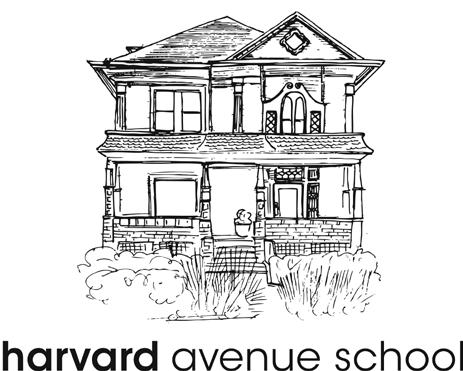
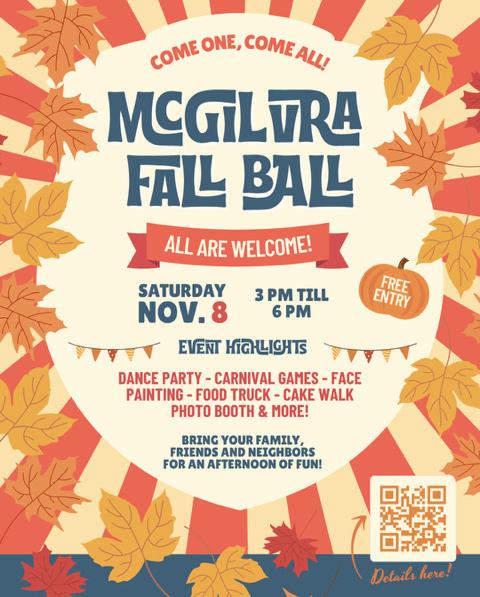
NEIGHBORHOOD MEETING CANCELED FOR NOVEMBER 11TH
Our meeting for November 11th- focused on the Bathhouse and Shoreline Restoration Project has been postponed as we await decisions from Seattle Parks and Recreation on what options are possible for this project.
Neighborhood meetings in 2026 will take place quarterly. We hope we are keeping the community well-informed through our website/newsletters/social media and bulletin board and that quarterly meetings can allow for deeper dives and discussions.
FALL CLEAN-UP- SATURDAY
NOVEMBER 15TH FROM 9-12.
It’s Fall Clean-Up Time in the Business area- raking weeding sweeping and planting bulbs to keep our business area looking beautiful for the upcoming holiday season. Saturday November 15th, 9-12. Check in at the corner of 41st Ave E at the Bank of America lot. Part of the City’s Adopt-AStreet program, the city provides tools and gloves and composting fall those sweet gum tree leaves! Sign up day-of or write to volunteer@friendsofmadisonpark.com.
DECEMBER FESTIVITIES IN THE WORKS!
Mark your calendars for Holiday festivities:
December 1-14
SHOP LOCAL - Now that you are thinking about the upcoming holidays, grab that perfect one-of-a-kind gift and support our wonderful local businesses! Look for promotions to and more details to come, including the Toy Drive and Warm Clothing Drive for Wellspring Family Services!
Saturday, December 13th
Wreath Making Class at the Bathhouse - 10-12.
All skill levels welcome! Time has come to get your wintry spirit blooming. Join us for our third year of wreath making classes- a magical morning of crafting with guidance from Nicole Morgan who will show you how to weave your own unique, wild holiday wreath. Please gather a few fresh cuts from your own backyard and bring to class for a personal touch. Nicole will be bringing in evergreen, holly, rosemary, rose hips, ivy, and other winter bounty from the northwest to round out your backyard forage. Complimentary pastries and tea will be available. Two kiddos are welcome to work with an adult. Price per person: $100. No refunds as foliage will be harvested the prior day. sign-up on our website at www.friendsofmadisonpark. com/wreathmaking.
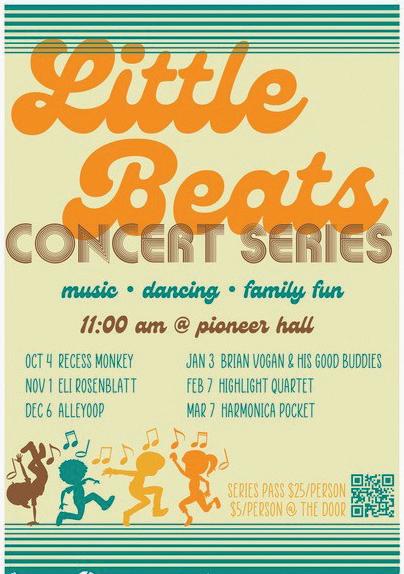
Artisan Market 10-4: Location and details to follow shortly.
Madison Park Coop Preschool Winter Event- Details and times can be found at www.friendsofmadisonpark.com/holiday.
Light the Holiday Tree in the Park5-6 p.m.
The beautiful Atlas Cedar in the park will be lit for the holidays and McGilvra Elementary School students are back in 2025 to serenade our community with songs for all holidays. Cookies and Cider too!
Sunday, aDecember 21st Santa photos at the Bathhouse at 6-9 p.m.- The Madison Park Co-op Preschool and Windermere host the
festivities and Parkshore provides the cookies; Madison Park Hardware provides the hot cocoa.
Christmas Ships and Bonfire 8:40-9:00 pm at Madison Park Beach Christmas Ships are back again this year! Join us for this long-standing holiday tradition!
ODDS AND ENDS
***There is a new STOP sign on 43rd E and E Howe. PLEASE LOOK FOR IT AND STOP AT THAT INTERSECTION!!! New crosswalks have also been painted at several locations on 43rd E- to create safer access to the beach and preschool from the business area and park. And STOP at the STOP sign.
***New lights on Street Trees/Added plantings- As many of the street trees continue to grow, we are replacing the tree lights along East Madison on the Starbuck’s and How to Cook a Wolf blocks, to ensure the light strands don’t get too tight and damage the tree trunks. We are also adding some new plantings under the trees on these blocks and crocus bulbs. Look forward to more greenery come spring.
3 SIMPLE WAYS TO SUPPORT FRIENDS OF MADISON PARK
—Subscribe to our Newsletter on our HOME page. www.friendsofmadisonpark.com
—Become a Monthly Donor —Volunteer for one of our Events
DECEMBER 6 , 10 AM - 4 PM














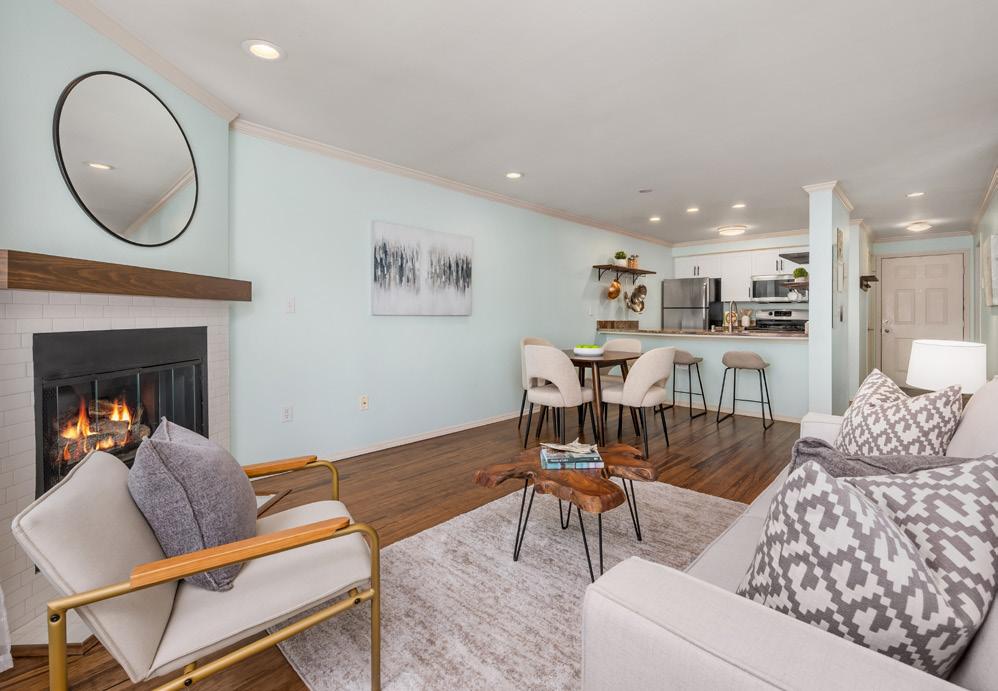

Homebuyers Likely to Remain Cautious into the New Year
By Evan Wyman

As we approach the end of 2025 we are seeing a housing market that continues to rebalance. Our neighborhood remains a desirable community for buyers and prices have remained steady, yet market times have increased as buyers are taking their time making decisions for a variety of factors including more choices and potential drops in interest rates. Agents on the ground see active open houses/good showing activity, and have high hopes for the spring housing market.
On that note, if you are considering selling in 2026, now is a great time to prepare your home for market. Buyers prefer turnkey homes—start planning now for a successful sale.
LET’S TAKE A LOOK AT THE NUMBERS: For Denny Blaine, Broadmoor, Washington/Madison Park
June 15th, 2025 through October 15th, 2025:
Sold Homes: 39
Average Sales Price: $2,793,467
Average Days on Market: 82
Average Price Per Square Foot: $876
Lowest Sales Price: $425,000
Highest Sales Price: $8,300,000
Selling at 96% of original listed price
Worth note: 32 of these are $1M+ and the average market time over $1M is 82 days
June 15th, 2024 through October 15th, 2024: Sold Homes: 36
Average Sales Price: $2,755,067
Average Days on Market: 32
Average Price Per Square Foot: $902
Lowest Sales Price: $475,000
Highest Sales Price: $7,500,000
Selling at 98% of original listed price
For 98112
June 15th, 2025 through October 15th, 2025: Sold homes: 126
Average Sales Price: $1,894,538
Average Days on Market: 49
Average Price Per Square Foot: $710
Lowest Sales Price: $230,000
Highest Sales Price: $ 8,300,000
Selling at 97% of original listed price
Worth note: 90 of these are $1M+ and the average market time over $1M is 49 days


June 15th, 2024 through October 15th, 2024: Sold homes: 106
Average
MY TAKEAWAYS: • Prices have remained steady, but market time has increased significantly.



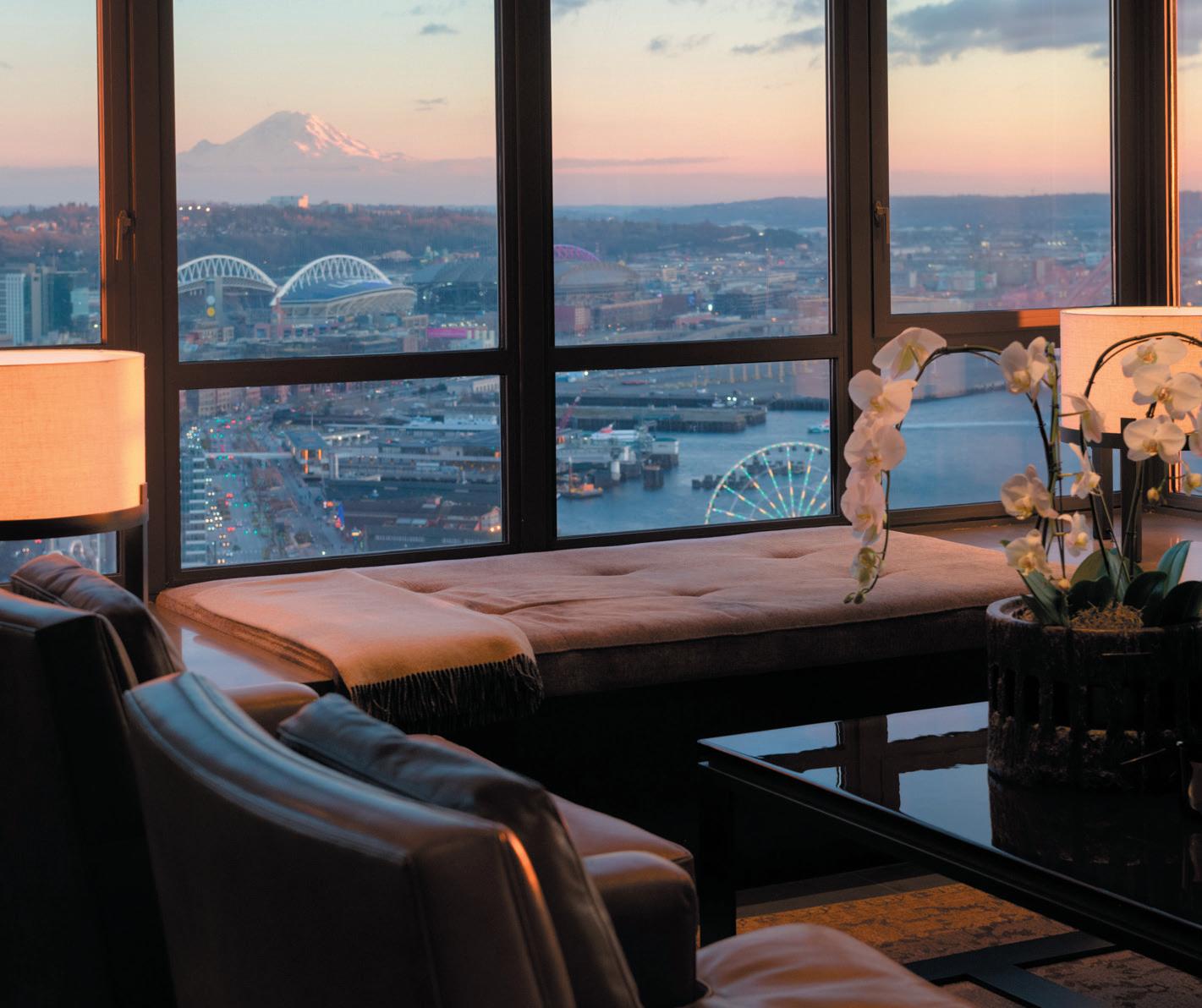
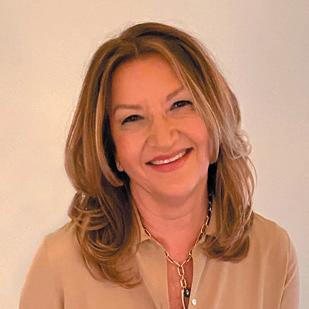





















• There does seem to be a market for move-in ready, remodeled homes; buyers are reluctant to take on projects.
• Homes that need work tend to take longer to sell.
• Buyers don’t feel the need to make rushed decisions which is leading to longer market times.
• Factors could be waiting for rates to fall, construction costs for remodels, and tax increases being discussed in Washington State.
• It bears repeating that when planning to list your home, it pays off to spend time and resources to properly prep the home for sale. A small investment will result in a higher return for a seller.
• The market feels balanced.
• In the high end, above $5M market in 98112, there have been 27 sales the past 3 years. In the 3 years prior, there were 25, so not much change in the high end in number of sales. Interesting that from 2019-2022 there were 4 sales over $10M and an average per square foot of $1,254 versus the most recent 3 year period with zero sales over $10M and a lower price per sq foot of $1,001.
• It’s important to work with an agent who has a history in the Madison Park market who also has a great network of agents they work with. Market knowledge, an edge in negotiation, and the inside track on potential opportunities are all factors.
• Websites like Zillow don’t show all available inventory.
As of press time, there are 15 homes for sale over $2.5M in Madison Park, Washington Park, Broadmoor, and Denny Blaine. None of the residences are condos, and the highest priced single-family home for sale remains a waterfront home for sale at $75,000,000 in Denny Blaine. If this home sells for that price it would be a record sale for Seattle.
Seattle bans grocery no-compete clauses to combat food and medicine deserts
By Spencer Pauley The Center Square
The Seattle City Council on Tuesday unanimously approved an emergency ordinance that bans anti-competitive covenants that prevent new grocery stores and pharmacies from opening in former locations.
This measure aims to address growing concerns about food and medicine deserts – a geographic area with limited access to healthy, affordable food and essential medicines – in the Emerald City. There are food and medicine deserts in several Seattle neighborhoods, including Beacon Hill, Georgetown, Northgate, Rainier Beach and Delridge, among others.
The newly-passed Council Bill 121094 makes "restrictive covenants” illegal. These agreements – put on a property’s deed or lease – block efforts to bring new grocery stores and pharmacies into existing spaces that could easily accommodate them. Former retailers sometimes do this to prevent competitors from opening in their old locations.
“Access to food is a human right and should not be limited due to barriers put in place by grocery store owners through restrictive covenants,” Seattle City Councilmember Debora Juarez said in a statement.
The legislation is an interim ordinance that went into effect immediately upon being signed by Mayor Bruce Harrell the same day. It's in effect for one year.
The city will conduct an analysis over the next year to inform and prepare permanent legislation.
According to a news release, there have been at least two covenants restricting a

property’s future use as a grocery store on Seattle properties. These covenants limited the square footage of any future grocery store at that location for as long as 50 years.
Council Bill 121094 was proposed by Harrell and City Council President Sara Nelson after several store closures were announced, including Whole Foods Market in Capitol Hill and Fred Meyer in Lake City.
The legislation also declares a public health emergency due to the recent store closures.
Along with this legislation, the mayor also recently issued an executive order directing city officials to explore acquiring the property of the former grocery store in Lake City to address food desert concerns in the neighborhood.
Additionally, the executive order calls for looking for ways for the city to acquire properties suitable for grocery stores in the future and to develop legislation changing land use, zoning and permitting regulations
to encourage more stores in at-risk neighborhoods. Plans call for the city to then find a third party to operate those sites. Government involvement in grocery stores have been the focus of some national attention recently due to New York City mayoral candidate Zohran Mamdani's backing of city-owned grocery stores. Harrell's opponent in the Seattle mayoral race, Katie Wilson, supports exploring publicly backed grocery stores to address food deserts. She envisions the city partnering with a private grocery provider or a union to ensure food access, not necessarily running the store itself. Her proposal involves a "public-option" store to keep food affordable and accessible in neighborhoods that lose grocery stores, according to UFCW 3000. Critics of government involvement in grocery stores have raised concerns about inefficiency, competition, costs and political manipulation.



“Laura was an absolute rockstar! Her professionalism and expertise were topnotch, but what really set her apart was her fun and personable approach. Thanks to Laura's dedication and hard work, I'm now living in the beautiful Broadmoor community. She went above and beyond to make my dream a reality, and for that, I am eternally grateful.” - Carson & Leann



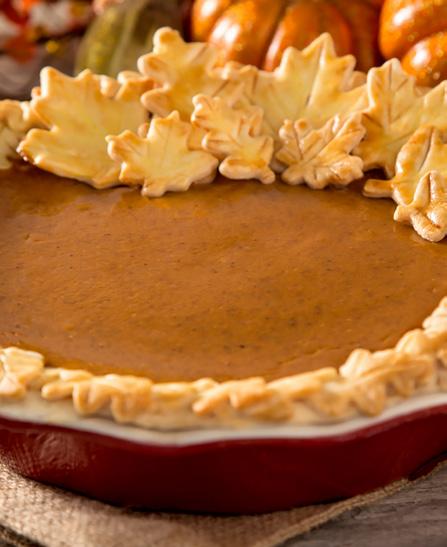

Keep Moving: Creative Ways to Stay Active Indoors
While getting outside has myriad benefits, there are times you have to be inside. As November comes in, so do gray skies, persistent rain, and the cozy pull of the couch. It’s easy to let days slip by without moving much – especially if you work remotely. Staying active indoors isn’t just about keeping your fitness on track; it’s a mood booster, stress reliever, and keeps your body limber, even when the weather keeps you inside.
MINI-WORKOUTS FOR SMALL SPACES
Movement keeps the blood flowing – including to the brain – lubricates our joints, stretches muscles, and signals the release of energizing hormones. You don’t need a gym or a lot of space to get your blood flowing. Even small apartments or offices offer plenty of room for movement. Start with desk stretches: roll your shoulders, stretch your neck gently, and twist side-to-side to counteract hours at the computer.
Micro-movements are just as valuable— try calf raises while brushing your teeth, squats while waiting for your coffee to brew, or marching in place during phone calls. Because movement influences metabolism, doing a few reps before or after meals can help moderate blood sugar and support insulin regulation—just 30 seconds of squats or ten minutes on a treadmill makes a difference.
A few compact tools expand your options widely. A yoga mat, a set of resistance bands, or light dumbbells don’t take up much space and work for strength training and flexibility routines. Standing desks, under-desk treadmills and yoga balls can also add a little movement while you work (or scroll).
The key is to all of this is consistency: even five to ten minutes a few times a day makes a big impact. Biomechanist and author Katy Bowman calls these “movement snacks.”
MAKE IT EASY
Habit and routine are your allies. Schedule movement blocks on your calendar as if they were meetings you can’t miss. Pairing movement with daily rituals—sipping coffee, brushing teeth, checking mail—cements it in your day.

You’ve heard “Sitting is the new smoking?” There are lots of ways to break up all that chair time. Fitness trackers and Apple Watches offer reminders to move or you can reminders on your phone. Ideally you’d move at least every 45 minutes, but everything helps.
“Movement becomes irresistible when it’s fun”
A partner or accountability buddy enhances commitment – you’re more likely to bail on yourself than a friend. Share progress with a friend, join a virtual miniworkout, or track your streaks in an app or journal to watch small wins accumulate. Even your clothing sends a signal. Lacing up sneakers or slipping into workout clothes primes your mind for action. Some people take it a step further, sleeping in workout attire to greet the day with motion. Rotate your routines, too: surprising your muscles keeps the body guessing and curiosity alive.
MAKE IT PLAYFUL
Movement becomes irresistible when it’s fun. Blast your favorite tunes for a quick
living room dance party—brain and body alike will thank you. Motion-sensitive video games and virtual reality workouts turn exercise into play, blending entertainment with effort.
Audio adds another layer of enjoyment. Another way to keep you focused is to incorporate audio: music, podcasts, or audiobooks make workouts fly by and feel even more productive.
Playing with the kids or your pets is a great movement break that boosts feel-good hormones for all parties. Actual chores boost your circulation and step count too, so you can feel virtuous while sweeping or scrubbing.
When you see movement as a creative challenge or game, it becomes less about “exercise” and more about enjoyment, shifting you from obligation or resentment to gratitude and anticipation.
MIND-BODY PRACTICES
al well-being.
The next time gray skies beckon you to linger on the couch, remember: five minutes of creative movement might be all you need to brighten your day.
The most effective movement plans hinge on habit and structure. Block time on your calendar—just like you would a meeting— for short movement sessions. Treat these as non-negotiable breaks in your day. Stacking movement with daily habits, like making your coffee or brushing your teeth helps wire them into your mind and your day.

Consider a buddy system to boost accountability. Schedule virtual mini-workouts or simply check in with a friend or family member to share your progress. Tracking movement, whether with an app, wearable, or journal, can also help maintain motivation and make the accomplishments feel tangible.
Some days call for gentler attention. Yoga and Pilates offer flowing sequences that strengthen the core, improve flexibility, and calm restless thoughts. Tai chi and Qigong merge movement with mindfulness, fostering balance and body awareness.
Even a few breaths can reset your system. Inhale as you lift or stretch, exhale as you fold or twist. Coordinating breath and motion stimulates circulation, eases tension, and nudges the nervous system into a state of calm alertness.
Even during the Big Dark, you can create pockets of energy, joy, and vitality right inside your home. Movement indoors— whether through mini-workouts, dance, mindful practices, or playful chores—offers a double benefit: strengthening your body while supporting your mental and emotion-
Dress for the job: putting on sneakers or workout clothes—even just for a quick indoor session—creates a mental cue that you’re ready to move. Some people sleep in their workout clothes to remind them to start their day with a movement session. While forming a routine is important, variety is key to challenge different muscle groups (keep the body guessing) and keep you engaged.
MAKE IT FUN
One of the easiest ways to stay motivated is to make it fun instead of looking at it as a chore. Crank up your favorite music for a 10-minute living room dance party—your body and brain will thank you. Motionsensitive video games or virtual reality fitness apps gamify your workouts to keep you engaged.
Chris Sudore
“As a Madison Park Resident, I care about your home‘s value.”







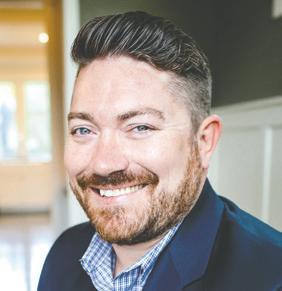

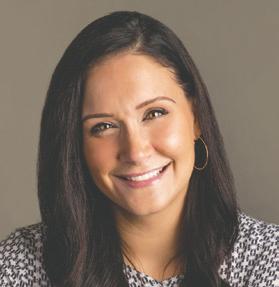
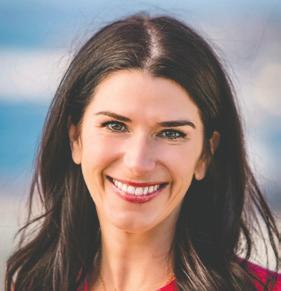
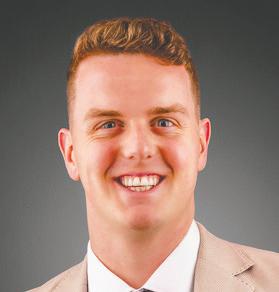




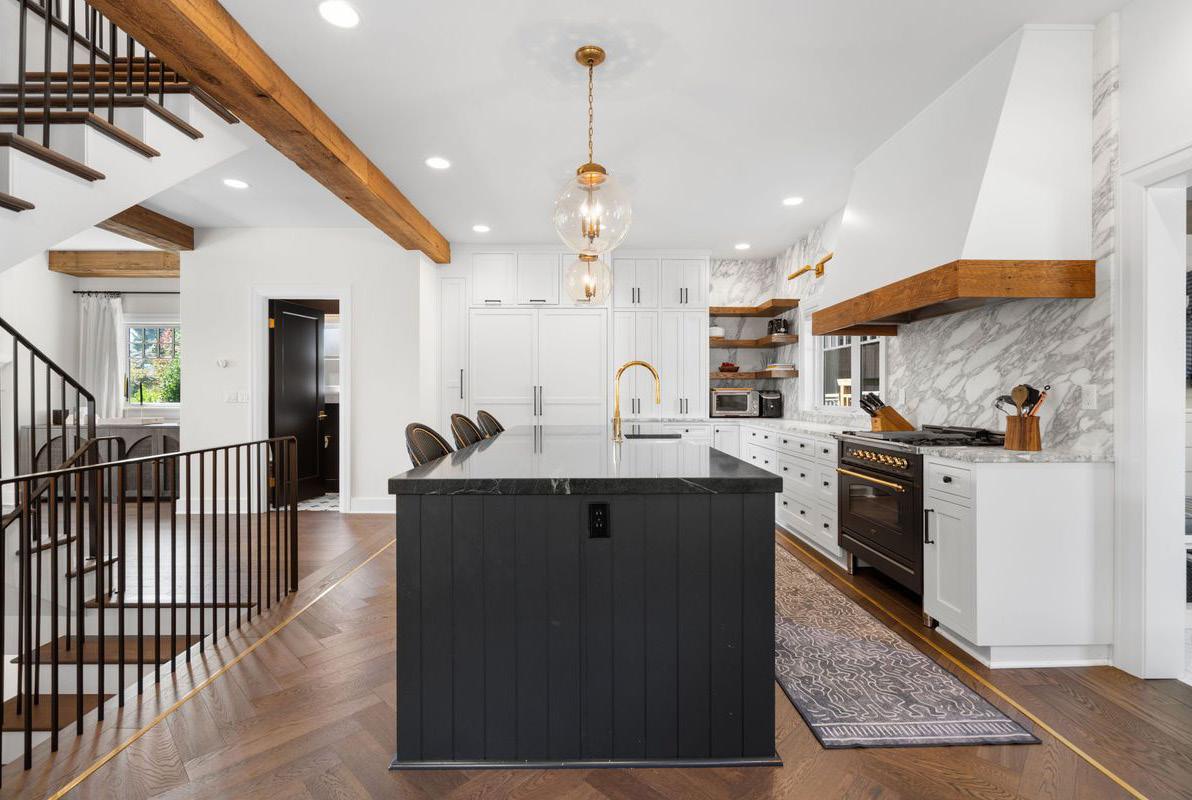


















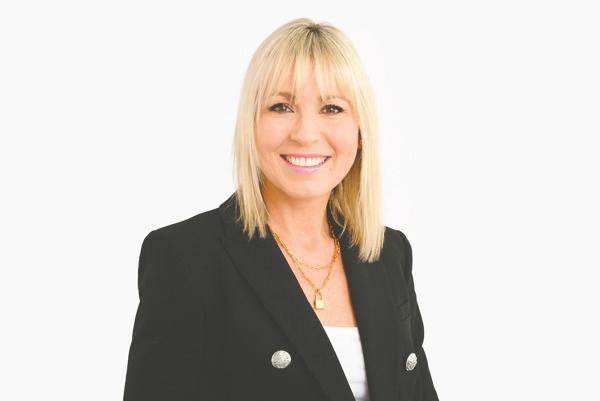
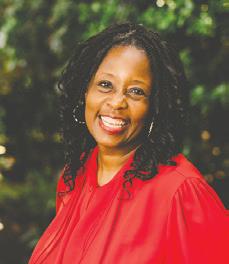








Elderberry Tincture – For Cold and Flu Season
By Annie Lindberg LAc, MES, MAcOM
Last article we explored the huckleberry, and today I'd like to take a look at the elderberry. Sambucus nigra ssp. cerulea, another deep blue native Washington berry, is brimming with health benefits that are particularly potent for the upcoming cold and flu season.
Whereas as huckleberries draw me to the montane and subalpine forests of the Olympics and western slopes of the Cascades each August, Elderberries entice me further east to the sunnier, drier valley bottoms, canyons, and forest perimeters east of the Cascades. Elderberry bushes thrive where forest meets meadow, at sunlit fringes of pine and fir woodlands, and along creek edges that hold a bit of seasonal moisture. In Central Washington, you’ll find them in abundance in the Wenatchee River valley, around Leavenworth, and through the Cle Elum and Methow Valley areas.
Elderberry bushes often stand 6–12 feet tall, or taller, with vibrant green pinnate leaves, their stems carrying a reddish tint. When ripe, their flat-topped clusters of small blue berries hover like umbrellas at the end of each branch. These heavy signature blue clusters - each containing hundreds of berries - cause the branches to bow gracefully under their weight.
Wild elderberries are ripe and best harvested in late August or September, though you might still find lingering clusters in early October at higher elevations. Always pick far from busy roads and avoid plants coated in dust or ash from wildfires. Clip whole clusters gently, leaving plenty for birds and bears who rely on them too.
Note that though red elderberries can be found in Western Washington, it is the blue
elderberries, Sambucus nigra ssp. cerulea, that I seek (and that are generally sought) for medicinal and tincture purposes.
By the time you read this most Washington elderberries have been eaten by birds, or desiccated by the heat, but perhaps this article will spur you to collect your own next season to concoct a fresh elderberry tincture from scratch. Until then, you can procure dried versions of this medicinal berry locally and create a tincture in plenty of time for this year's flu season.
“In Central Washington, you’ll find them in abundance”
Examples of local Seattle storefronts that regularly carry elderberry include Rainbow Remedies, Mountain Rose Herbs Mercantile, The Herbalist, and Bastyr Natural Medicine Shop. You can order online from several of these shops as well.
ELDERBERRY–GINGER–LEMON–TURMERIC TINCTURE
A potent immune and anti-inflammatory tincture for cold season.
Ingredients:
➧ Dried elderberries 1 cup (or 2 cups fresh)
➧ Fresh ginger root 2–3 Tbsp grated or thinly sliced
➧ Fresh turmeric root 1–2 Tbsp grated (or 1 tsp dried turmeric powder)
➧ Lemon zest from 1 large lemon
➧ Lemon peel (optional) Small strip, no pith
➧ Cinnamon stick
➧ Peppercorns 12



➧ Vodka or brandy (80–100 proof) Enough to cover herbs by 1–2 inches
➧ Glass jar with tight-fitting lid 1 quart size preferred
Instructions:
• Lightly crush or chop the elderberries to expose more surface area. (Note that if using fresh berries be sure to remove all stems, leaves, and unripe berries).
• Place elderberries, ginger, turmeric, lemon zest, cinnamon, peppercorns in clean glass jar.
• Pour vodka or brandy over the mixture until the ingredients are covered by 1–2 inches.
• Seal tightly, label with ingredients and date, and store in a cool, dark place for 4–6 weeks.
• Shake gently every few days to aid extraction.
• After steeping, strain through cheesecloth and bottle into amber glass dropper bottles.
• Label clearly (e.g., 'Elderberry-GingerLemon-Turmeric Tincture – Nov 2025').
Dosage & Storage:
• Preventive: ½ teaspoon (2.5 mL) during cold/flu season. (You could take it daily or perhaps just when you know you've been in close proximity to someone who is sick)
• At onset of symptoms: ½ teaspoon every 2–3 hours for the first day, then 2–3 times daily.
• Store in a cool, dark place — tinctures remain potent for several years.
Ingredients' Medicinal Benefits:
Elderberries are the heart of this tincture—a deep purple, antioxidant-rich fruit revered as a protector during the colder months. Potent anthocyanins and flavonoids


help strengthen the immune system, reduce viral replication, and ease inflammation throughout the body. In herbal tradition, elderberries are seen as both a shield and a nurturer: they fortify the lungs, soothe sore throats, and quicken recovery from colds and flus. Rich in vitamin C, quercetin, and natural immune modulators, they help prevent illness and bring the body back into balance after cold or flu.
Fresh ginger stimulates circulation and eases congestion. Its pungent compounds - gingerols and shagaols - have antiviral and anti-inflammatory properties that help soothe sore throats and calm inflammation.
Turmeric adds additional anti-inflammatory, immune-balancing, and circulatory benefits to the blend, supporting health. When paired with black pepper, tumeric's active compound curcumin becomes dramatically more absorbable—its bioavailability boosted by up to 2,000%.
Lemon zest brings a bright aromatic note to the tincture as well as a gentle dose of vitamin C with accompanying antioxidant and antimicrobial properties.
Cinnamon adds gentle warmth and sweetness, balances blood sugar, enhances circulation and supports the body’s natural defenses with its antimicrobial and antioxidant compounds.
Wishing you a hearty and healthy autumn, aided as desired by your elderberry tincture.
Annie Lindberg is a licensed acupuncturist, Chinese Medicine practitioner, and Ayurvedic practitioner. She also holds a Masters of Environmental Studies. She owns and practices at The Point Acupuncture & Ayurveda, located in Madison Park and is a regular Madison Park Times health columnist.




